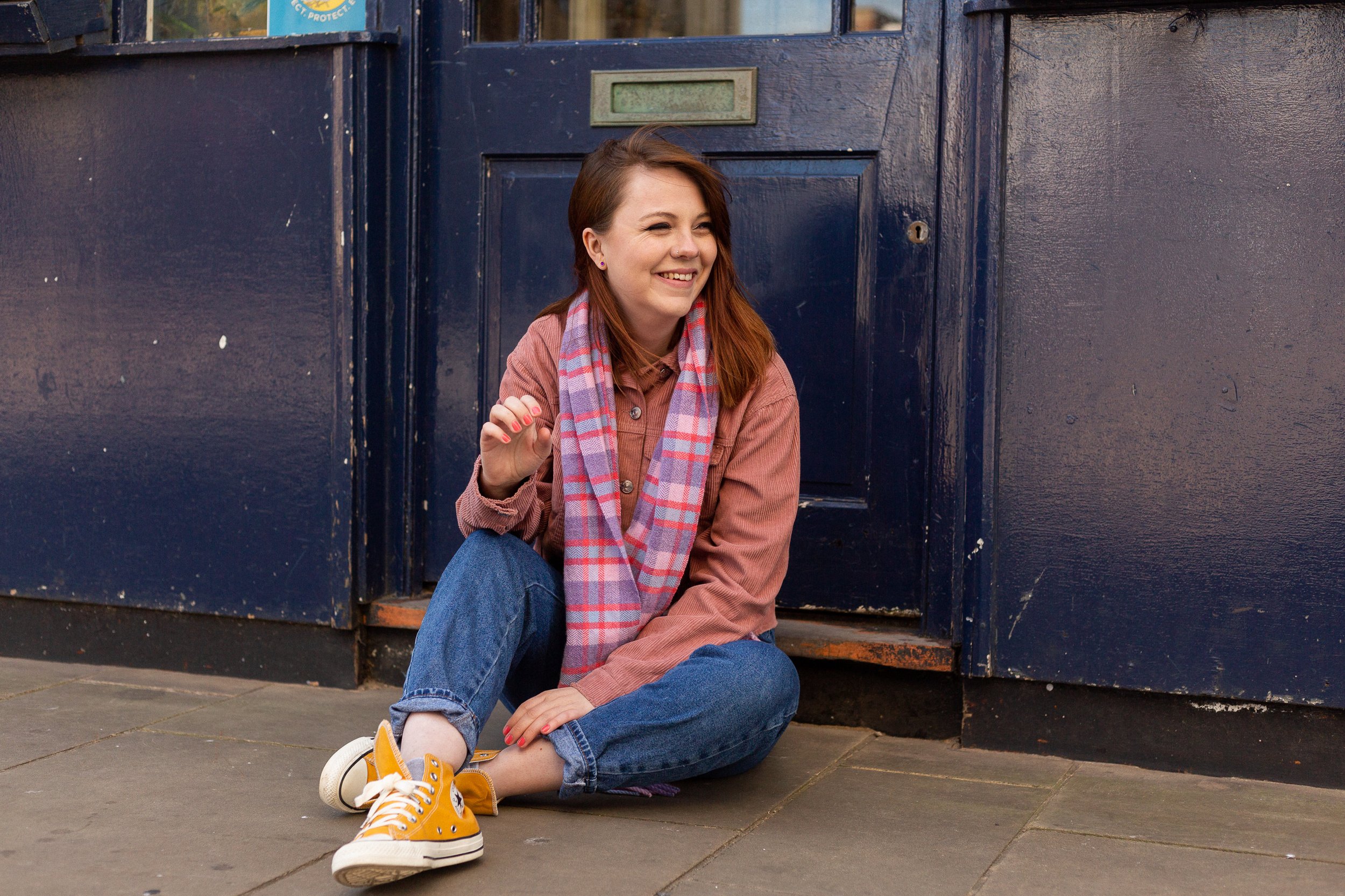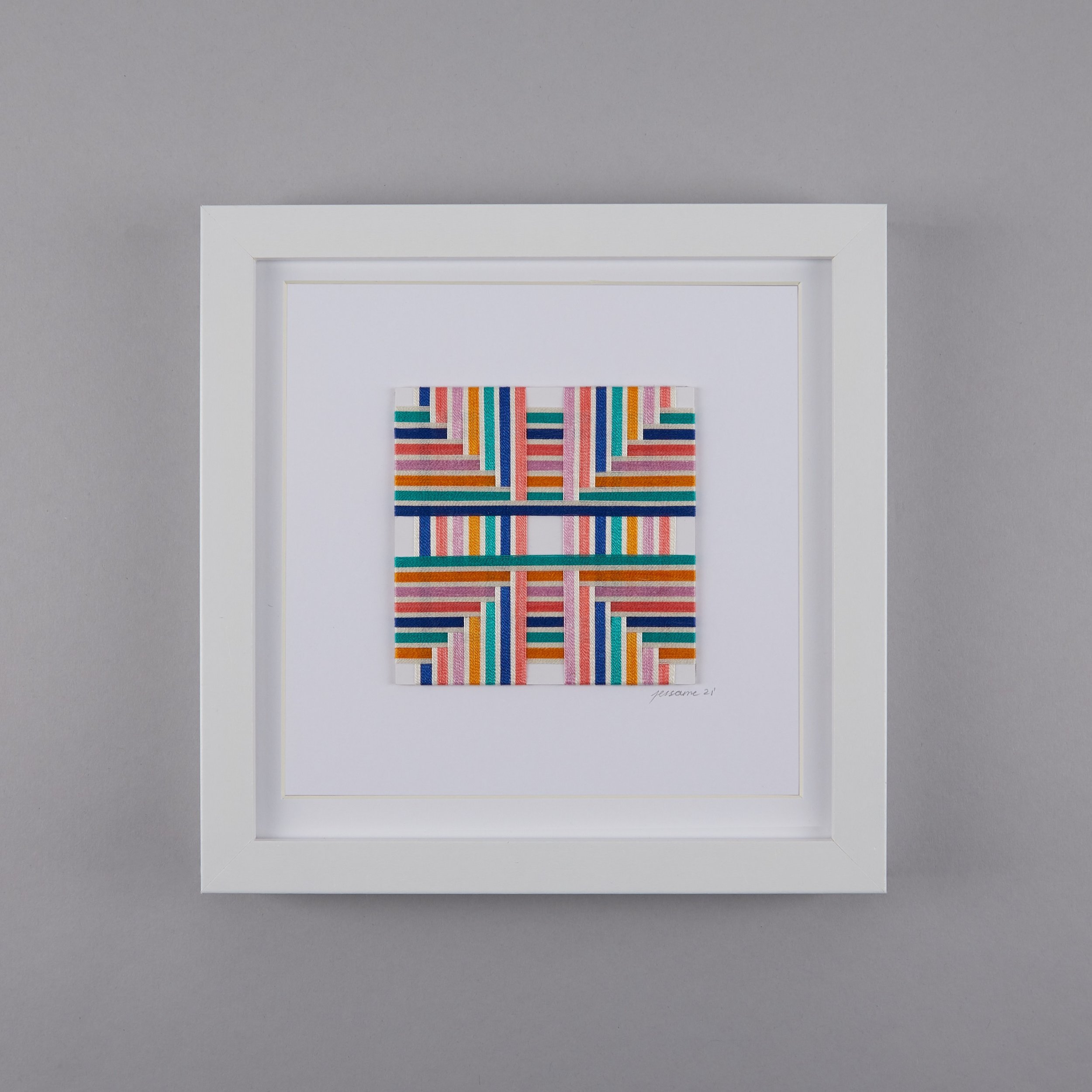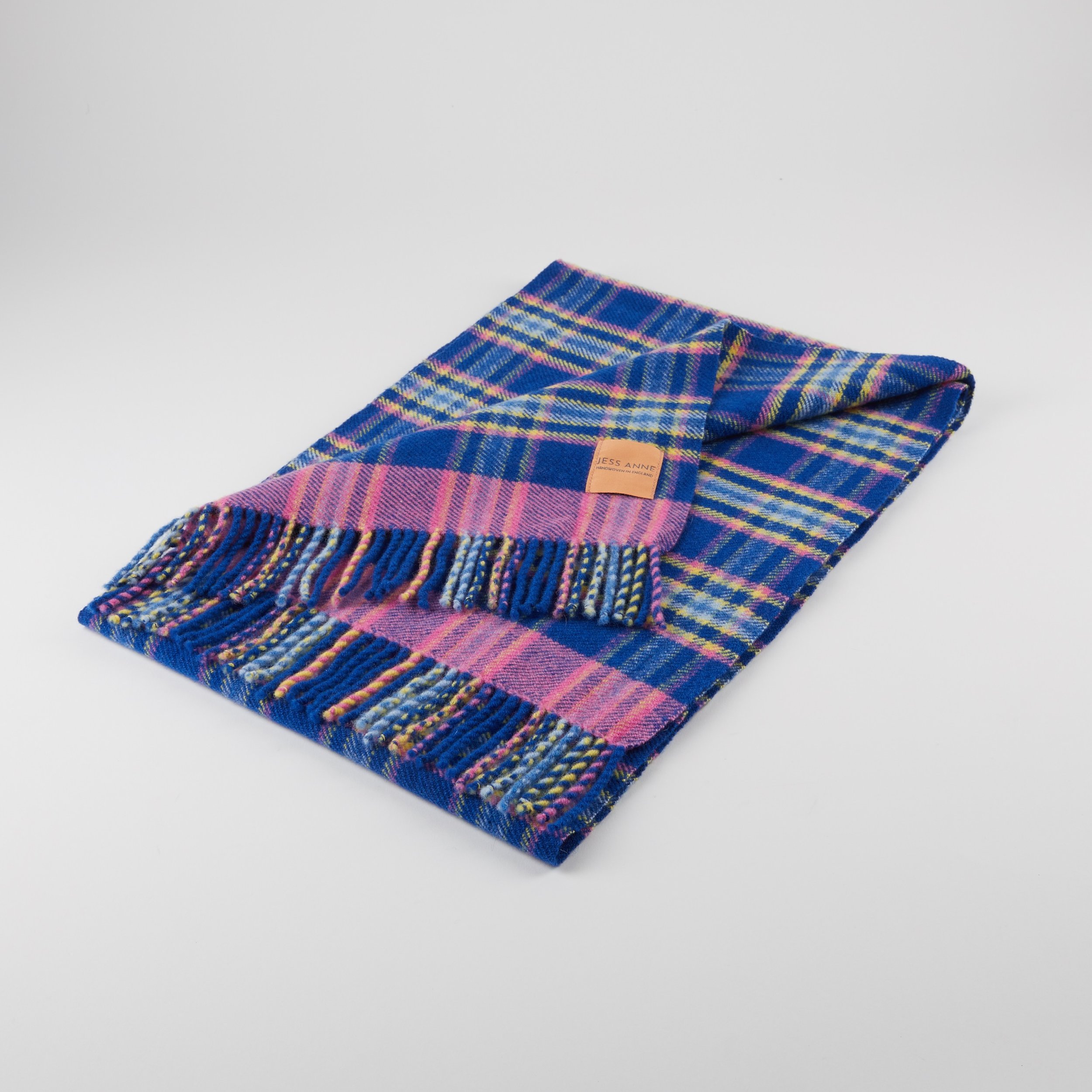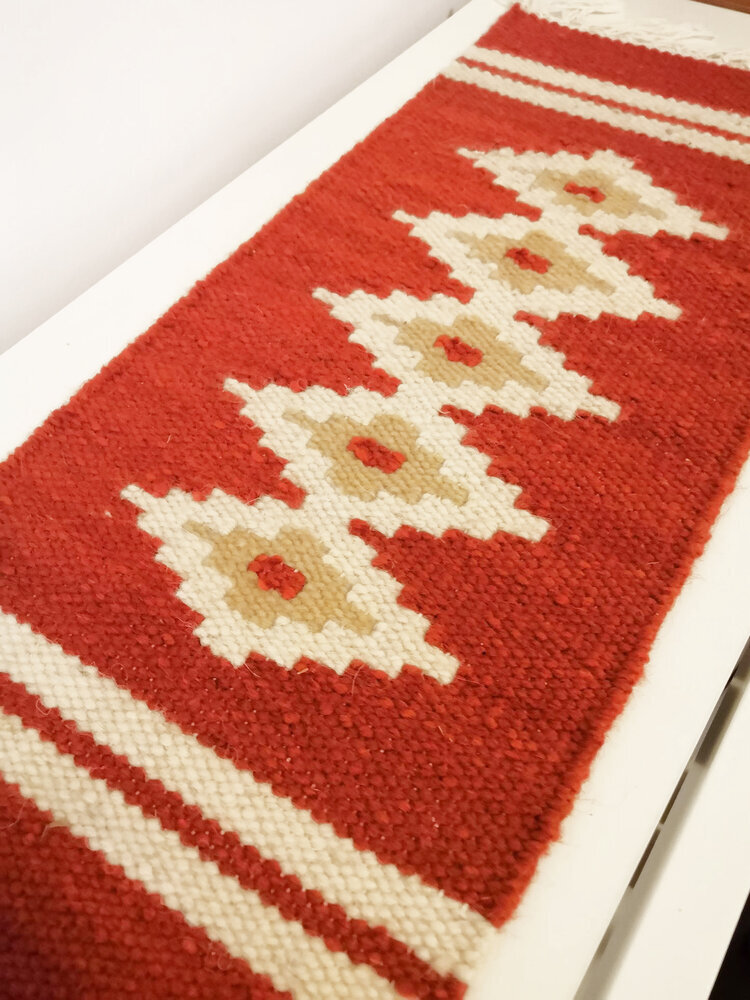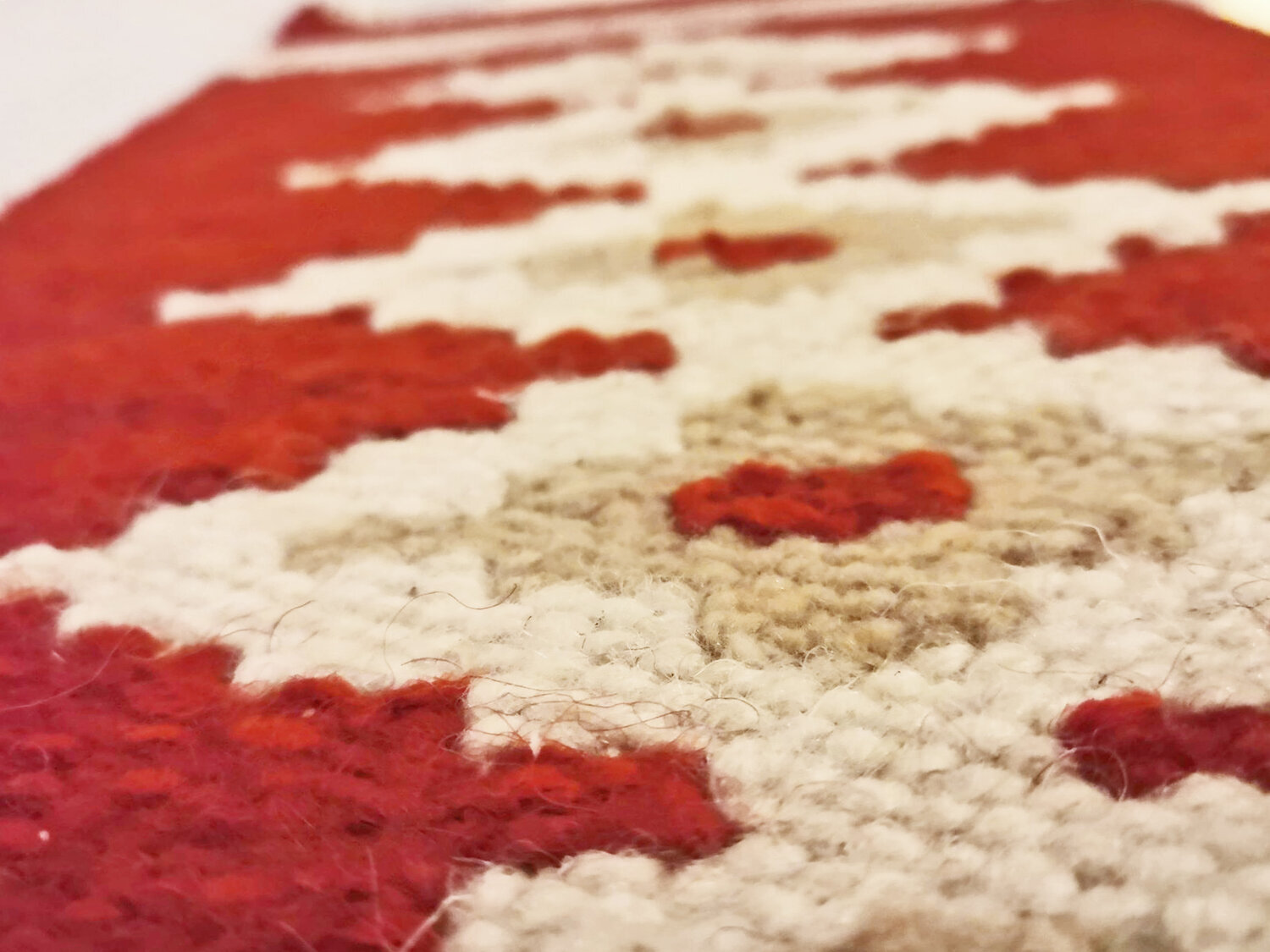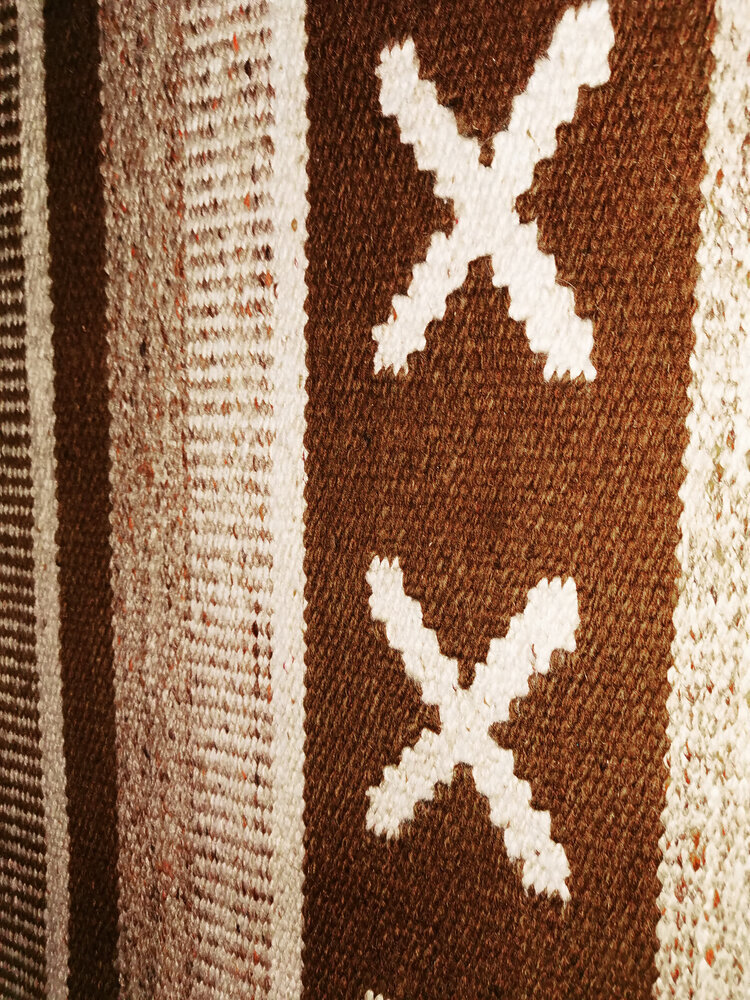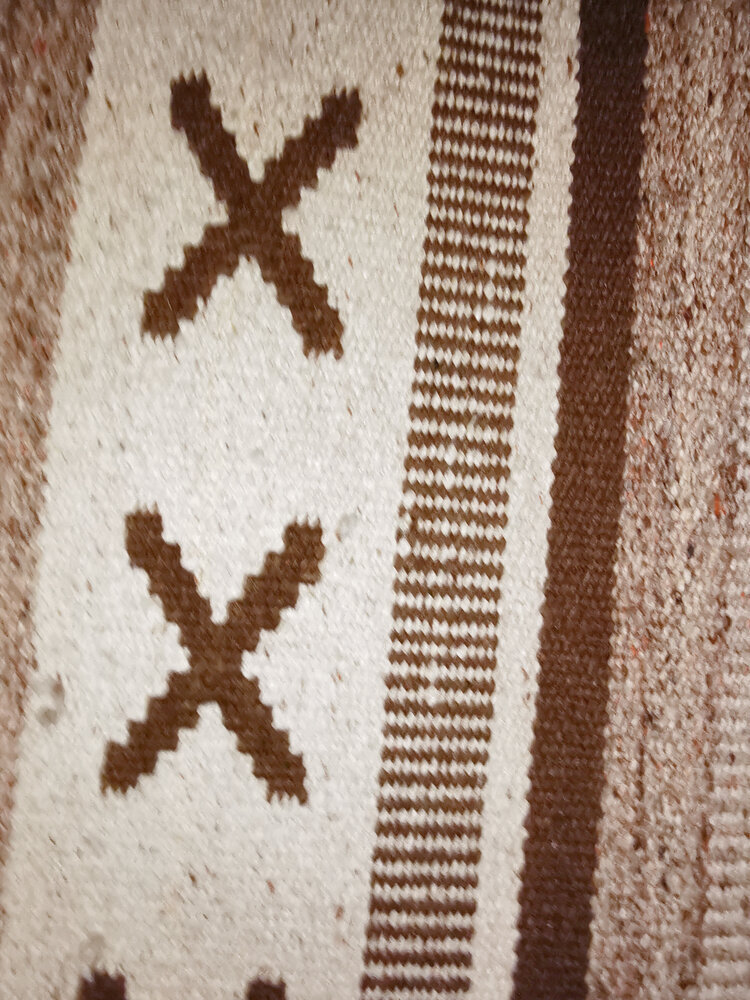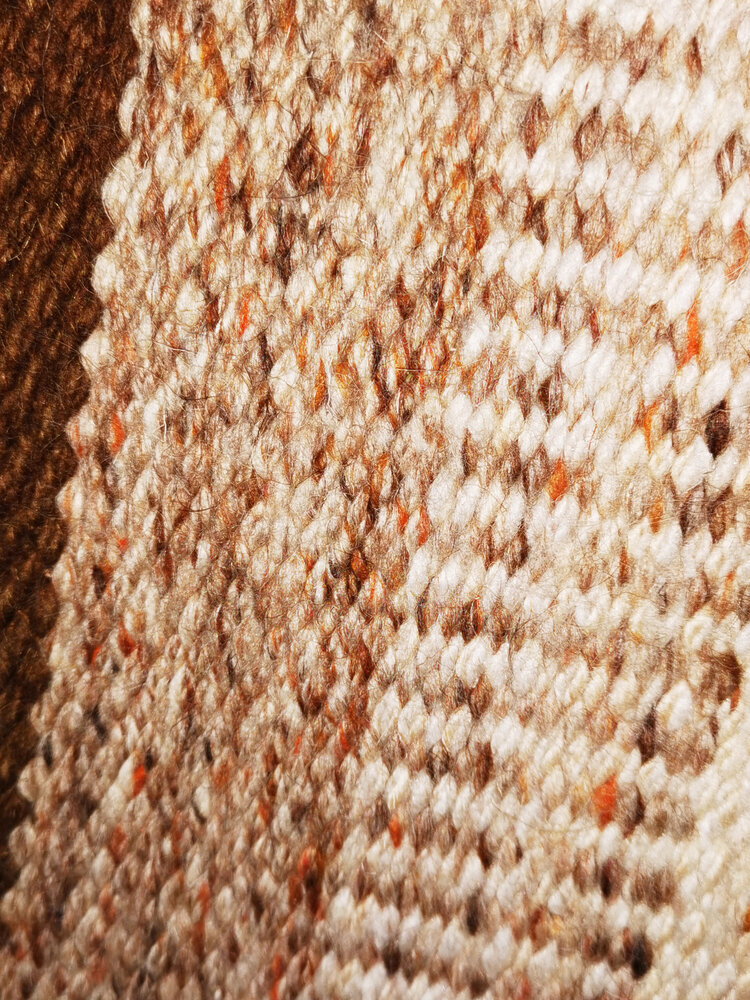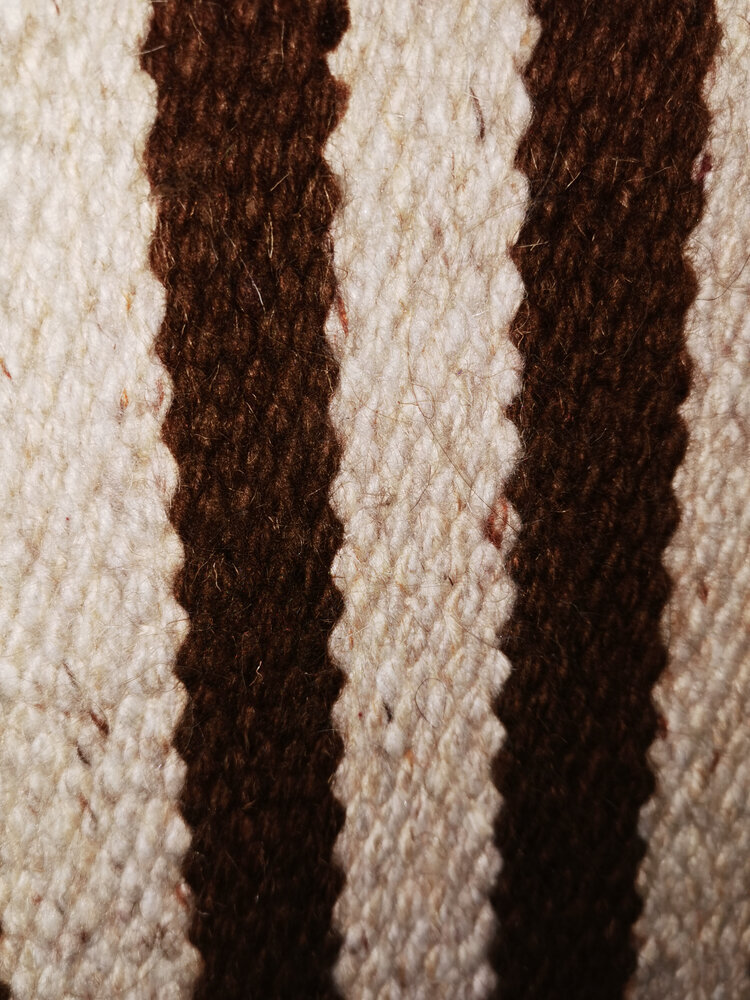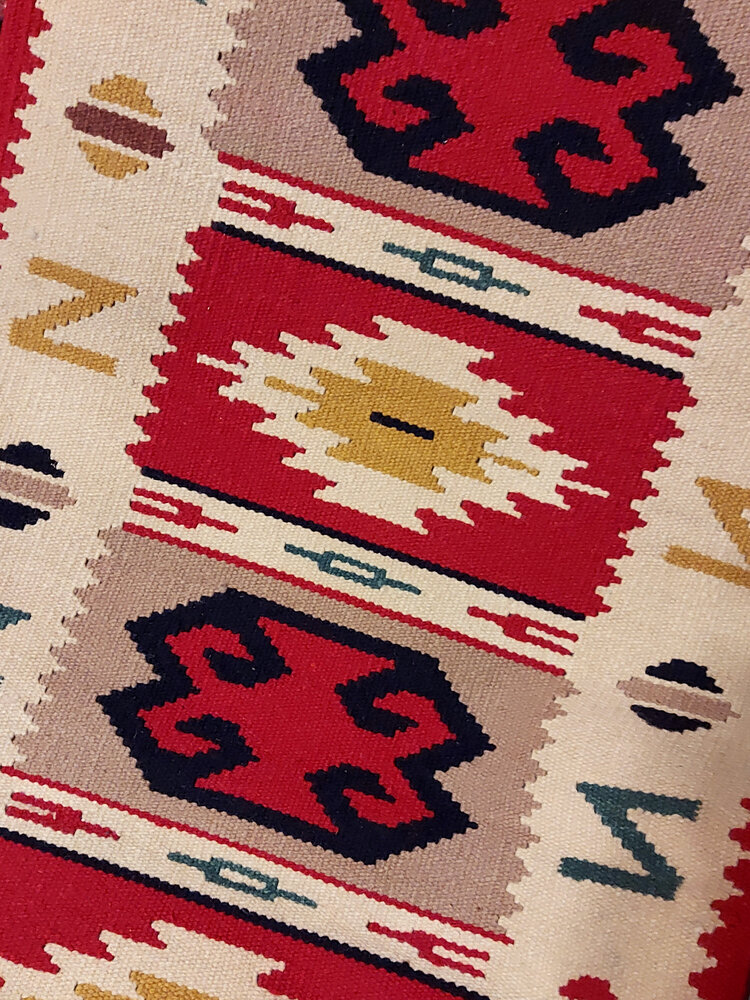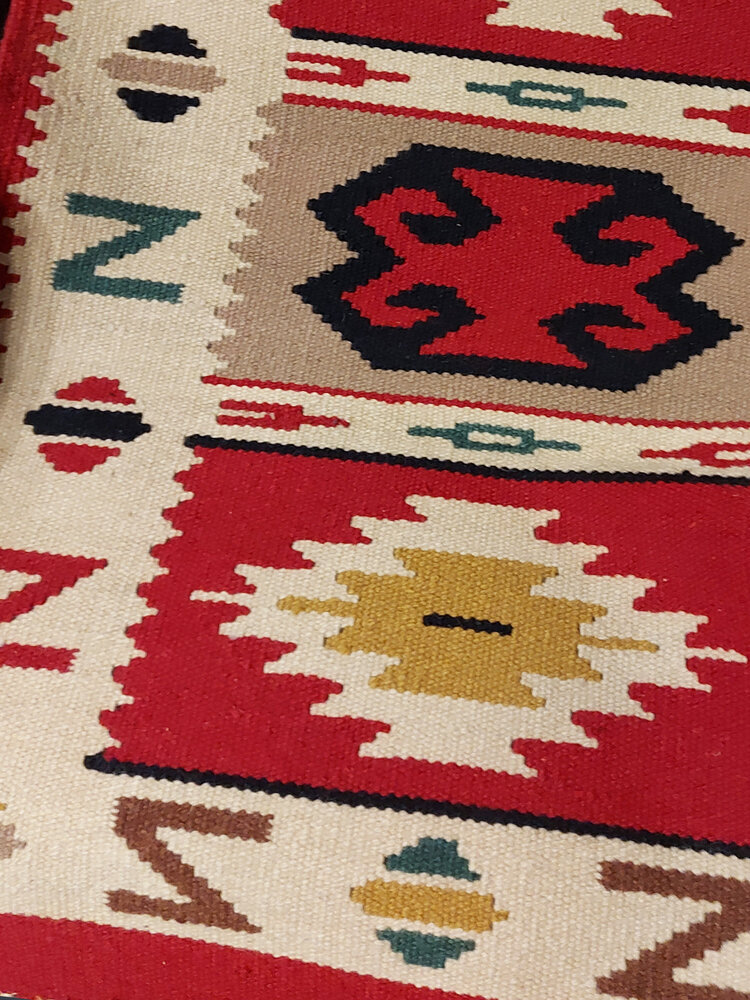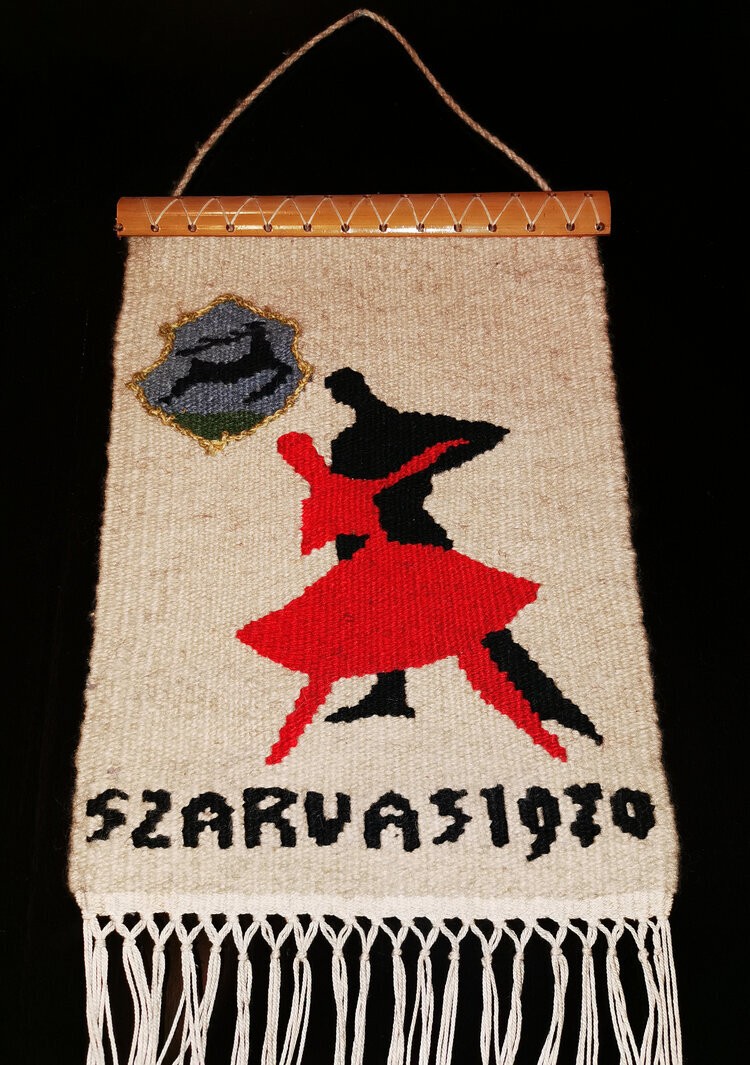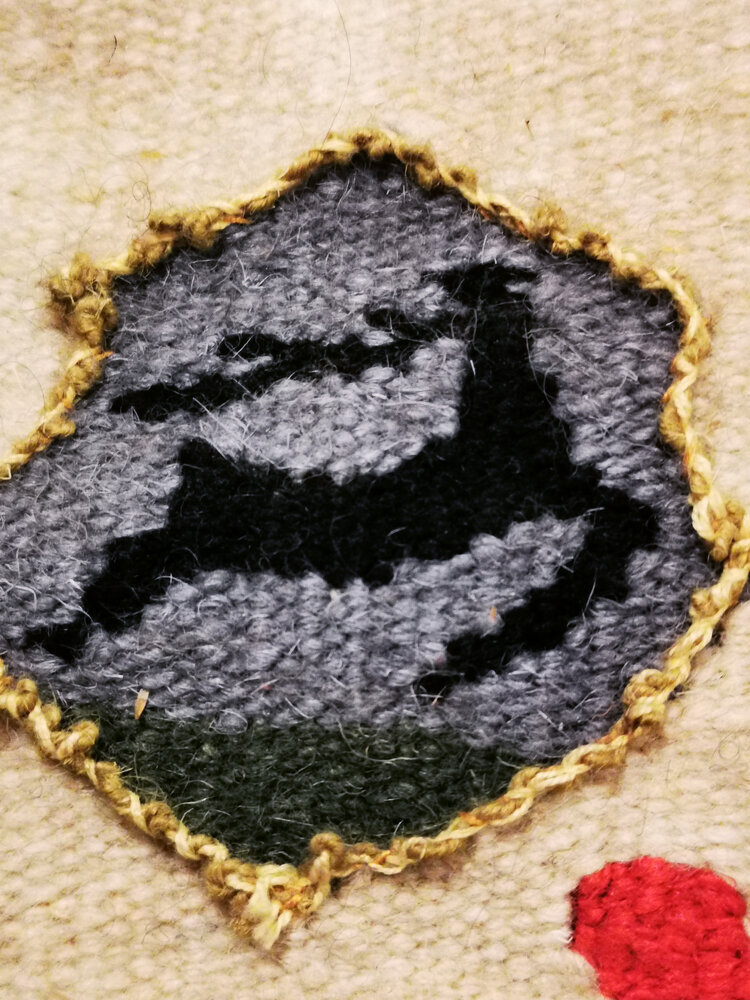my oh my, it’s been a while since we had a good, deep design conversation hasn’t it! the talent of course has always been there and shining, but we now finally had the time as well, to meet some and explore their fabulous work. i’m very excited to introduce jessica clements of JESS ANNE today. she is a woven textile designer whose gorgeous works, with incredibly bold and bright colourways caught my eye immediately, and we’ve gone into process, materials and inspiration to bring her vibrant textiles closer to you.
ZITA: hi jess! first things first - could you say a few words about yourself, what you do and how you got there?
JESS: of course! so hello everyone my name is jessica, i’m 26 years old and live in broadstairs in kent and i’m the founder of JESS ANNE! i started my brand in 2019, just before the pandemic and i really wanted to create a brand that explores woven cloth featuring bright colours that spark joy!
ZITA: and it’s working i think! the first thing that really catches the eye about your work i think are your vibrant colourways! i just love the high contrasts and the neons so much. could you share a little bit about the thoughts that go into putting your wonderful schemes together?
JESS: it’s hard to explain but typically i don’t have a source of inspiration as such, it’s more of a feeling that i have. when i look at colours i don’t tend to think of trends or “what’s in”. i tend to think do they spark anything within me, do these colours remind me of a pleasant memory or place, or do they make me feel like if i wore those colours, i would feel confident? pretty? bold? i just sense my way through the colour choices rather then trying to have an elaborate explanation behind them. if the colours feel right, it feels right! obviously, every individual will have different tastes or opinions on style, however, the colours i choose express who i am as a designer and just as a human being!
ZITA: as a fellow pattern lover, i find weaving – and your particularly geometric patterns fascinating, i guess weaving is very “mathematical”. can you explain a little bit about the process of designing your patterns? what does it look like when one of your colourful patterns come together – is it a long chain of trials and errors, or do you nail it most of the time?
JESS: so, weaving is definitely not for those who don’t enjoy maths. weaving is one of those processes where accuracy and maths is everything and could make or break a pattern or even the physical cloth. when i begin my design process i always start with the colours (obvs!). from there, i tend to experiment with whatever i feel like i need to personally conquer as a weaver who is always trying to progress. as i’ve said before i’m not too driven by trend or styles, but much rather just expressing who i am as a designer and where i am in my personal development as a young creative. the geometric patterns was a real test for me! however it was one I wanted to conquer and prove that i can push my limits (and my own confidence!). when developing a design, the maths has to be spot on, and the maths can shift/change depending on the types of yarns and patterns chosen. i experiment with smaller samples first, writing every calculation to make sure I have the right amount of yarn ends and that i’m using the correct size of equipment such as the reed for the cloth i desire.
it’s definitely a trial and error thing! i wish i could say i nailed it on the head every time but that wouldn’t be true. sometimes yarns do not want to cooperate, even if you double checked every calculation and detail. sometimes, even the smallest of details overlooked can dramatically change the look and feel of the cloth. however, once the sample is nailed and its something that i feel proud to put my name too, i would then expand on this sample to create a range of products!
ZITA: what a fascinating process. i find the abstract nature of your work very interesting – i particularly love your woven artworks, it’s like you deconstructed your own craft into something else, something a bit more abstract, they feel quite architectural to me but also remind me of op-art a little bit. can you share a few thoughts about these pieces?
JESS: oh the card windings! i love these little pieces. when studying, we were taught that these card windings were used initially as just a development stage, to try out colourways and warp patterns. however, I started to expand on these using different shapes of card and found they deserved to be mini pieces of art in their own right! carefully hand wrapping card with desired colours in any order?! who wouldn’t?! i think the woven structure will always have an element of being architecturally inspired because the typical woven form relies so heavily on being constructed in a way that it will structurally hold together! not only do they help inform the woven cloth designs but they create such dynamic little studies that are interesting enough to want to hang on the wall!
ZITA: i think they work brilliantly, i really love them. now, let’s talk materials! what kind of materials do you work with – do you mix them often, or do you stick to one or two that works? what works?
JESS: oh good one. i’m a typical creature of habit, however as i’ve been designing, i’ve been trying my hardest to break free from my comfort zones. i tend to weave mainly with lambswool, however, in my most recent collection i have really been trying to expand on my products and offer lighter alternatives to the heavier & warmer wools and been experimenting with cotton/linen blends. i tend to use cottons for my card windings and happen to find myself using these now in my newer designs as a supplementary yarn. i’m hoping the more i evolve as a designer, the more i will be adventurous and try more yarns! eek!
ZITA: have you found that sustainability and ethical sourcing has become more of a point with your customers as well as in your supply chain? how do you find this – have you always worked with such materials?
JESS: i think by now most consumers are concerned with the environment, as they should be! it’s so important for people to realise the impact the textile industry has on the environment, and this should definitely be more integrated into our buying habits. as an independent designer and so early on in my journey, i handweave all of my designs, eliminating the risk of buying into any sort of sub par factory conditions or any sort of exploitation (although, it’s of my understanding now these regulations are in place and finally the textile world is shifting into a much more ethical way of producing). the yarns i order are from smaller independent shops in the UK, who also do their own background investigations into where they source their yarns. the company that i purchase my lambswool from and the cottons are very transparent in their processes which makes the selection process much easier. it’s so difficult to navigate through the world of industry, however, i remain conscious of my purchases and in the future when i have built up my brand, i strive to be a designer who is part of the ever so important sustainability movement.
ZITA: i think it’s growing really quite fast, nearly all designers i know are now considering this. i got to know you as a fellow participant of a new TV Show and you’ve also been through some thorough mentoring and an intensive development process i guess! how has it been for you in the last few months? without any spoilers, can you share a little bit about how you have developed your work and maybe about some of the new pieces?
JESS: so the show really helped me become who I am today in just a short amount of time! the mentoring was pretty intense to say the least and it was difficult at times to break old habits and ways of thinking, but it was exactly what I needed to tap in to the potential for my woven designs! before filming i lacked confidence and found my development of designing was very slow, as i was always very nervous of trying new patterns/yarn in case they didn’t work out (yes, i am one of those people that if i don’t nail it first time, i get very frustrated!) however the mentoring on the show really helped me overcome that fear and removed the barrier between me as a designer and creating much more statement designs. the designs that will feature in the show really came from a place of needing to push my own boundaries rather then a specific source of inspiration. i view this collection as a natural progression from my previous broadstairs project and i think there something really lovely about my projects linking this way.
ZITA: this is very exciting and i can’t wait to see al this progress on TV soon. development is an interesting process, have you found any new sources of inspiration? where do you normally go to or look to? have you found it’s changed lately?
JESS: i think my design process and sources of inspiration changes almost constantly. as my practice and skills develop and as i continue to design, i find my inspiration shifts so frequently that’s its hard to even keep up with myself! i was inspired mostly by nature and my surroundings in my home town, however i found that more recently my work is more inspired by my own feelings and the feeling i wanted to provoke in people if they were to wear my design. i’m starting to really explore how fabric design and colour combinations can provoke different emotions.
ZITA: fascinating! and where do you want to see your work most? what’s your dearest ambition, where do you want to take your work next?
JESS: i would absolutely adore to see my brand grow and eventually develop into a fashion brand. the dream has always been to see my fabrics on garments such as beautiful, tailored suits and dresses and feature in glossy magazines (i think most designers have this day dream!), TV, instagram… and just generally see my work being used by all over the world! the sky is the limit!
ZITA: yeah, you go girl! and now the question i ask from everyone - can you recommend a book? or an artist or a maker whose work is worth looking into? something or someone that keeps you thinking forward?
JESS: oh my goodness there’s so many artists and designers that inspire me from across the board i couldn’t possibly narrow It down! there’s so many amazing weavers out there such as margo selby, ptolemy mann, rita parniczky, theo rooden… the list is endless! i think any of these artist would be good start if you wanted to understand more about woven design and what is possible!
ZITA: and lastly but most importantly, where can we see your work next?
JESS: so as i’m typing this i have no current exhibitions or markets coming up, however my products are available through my website and i welcome emails or instagram DMs enquiring to commission or purchase. i’m currently still in the process of re-branding and re developing my website and i’m communicating with smaller retailers about becoming stockists. exciting! ahh!
ZITA: sounds like you have a lot on your plate, but i’m sure it will work out. thanks so much for talking with me!
-
Links:
‘make it at market’ (BBC media centre website)
ptolemy mann (crafts council website)
rita parniczky (saatchi art website)


